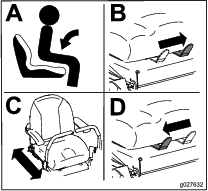Installation
Preparing the Machine
-
Park the machine on a level surface.
-
Disengage the blade-control switch.
-
Move the motion-control levers outward to the NEUTRAL-LOCK position to engage the parking brake.
-
Shut off the engine and remove the key.
Removing the Existing Seat Assembly
-
Tilt the seat up as shown in Figure 1.
-
Unhook the tilt cable from the seat pan (Figure 1).
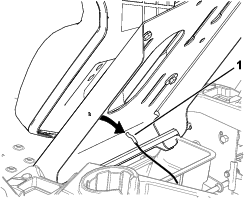
-
Disconnect the harness from the seat switch (Figure 2).
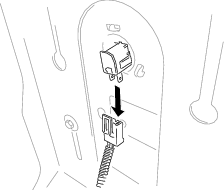
-
Tilt the seat down.
-
Remove the 2 bolts holding the existing seat assembly on the pivot rod (Figure 3).
Note: Retain the 2 bolts for installation of the deluxe seat assembly.
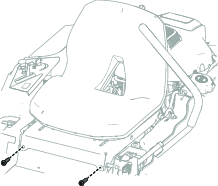
-
Remove the seat assembly from the machine (Figure 4).
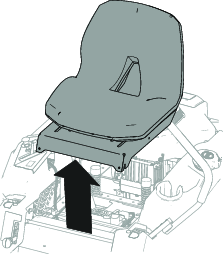
Installing the Deluxe Seat Kit
Parts needed for this procedure:
| Seat back | 1 |
| Bolt (5/16 x 1–1/2 inches) | 2 |
| Nut (5/16 inch) | 2 |
| Seat-base assembly | 1 |
-
Secure the seat-base assembly onto the pivot rod with the 2 bolts previously removed (Figure 5).
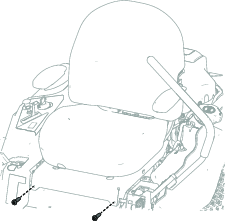
-
Slide the seat back onto the seat-base posts and align the holes (Figure 6).
-
Secure the seat back using 2 bolts (5/16 x 1–1/2 inches) and 2 nuts (5/16 inch); refer to Figure 6. Torque the bolts to 24 N·m (18 ft-lb).
Note: Insert the bolts from back to front. You may need to shift the seat fabric to install the nuts.
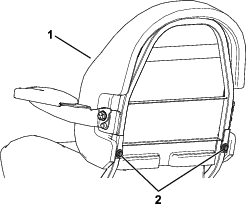
-
Tilt the seat assembly up.
-
Connect the seat switch (Figure 7).
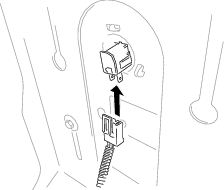
-
Tilt the seat back partway.
-
Attach the seat-tilt cable from inside the seat pan (Figure 8).
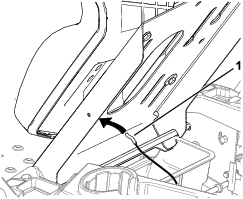
Testing the Safety-Interlock System
Caution
If safety interlock switches are disconnected or damaged the machine could operate unexpectedly causing personal injury.
-
Do not tamper with the interlock switches.
-
Check the operation of the interlock switches daily and replace any damaged switches before operating the machine.
Refer to your Operator’s Manual for the correct procedure to check the safety-interlock system.
Test the safety-interlock system before you use the machine each time. If the safety system does not operate as described in your Operator’s Manual, have an Authorized Service Dealer repair the safety system immediately.
Product Overview
Fore/Aft Adjustment Lever
The seat can move forward and backward. Position the seat where you have the best control of the machine and are most comfortable (Figure 9).
